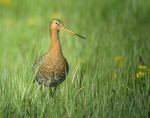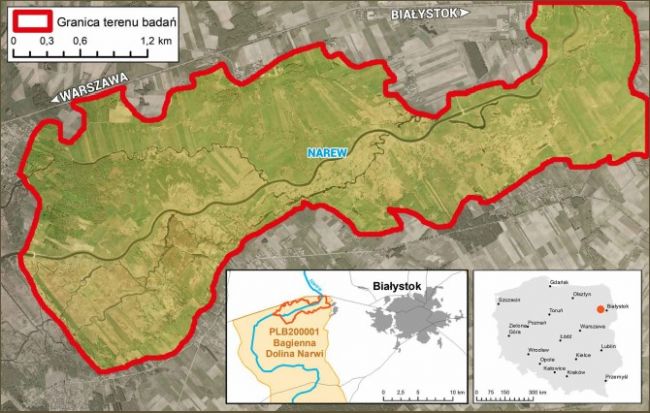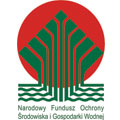 For centuries the spring flood waters of the River Narew have shaped the landscape of the Marshy Narew Valley between Suraż and Żółtki. This is how a unique ecosystem of a multichannel river bed was created; a habitat for many precious and threatened plant and animal species. The significance of this area is emphasized, for example, by the fact that it was recognized as an international IBA birdlife habitat and included in the Natura 2000 network as the Special Birdlife Protected Area of the Marshy Narew Valley. From 1985 this area had the status of the Narew Landscape Park, and in 1996 it was transformed into the Narew National Park (NNP).
For centuries the spring flood waters of the River Narew have shaped the landscape of the Marshy Narew Valley between Suraż and Żółtki. This is how a unique ecosystem of a multichannel river bed was created; a habitat for many precious and threatened plant and animal species. The significance of this area is emphasized, for example, by the fact that it was recognized as an international IBA birdlife habitat and included in the Natura 2000 network as the Special Birdlife Protected Area of the Marshy Narew Valley. From 1985 this area had the status of the Narew Landscape Park, and in 1996 it was transformed into the Narew National Park (NNP).
 A serious threat to the Marshy Narew Valley was posed by drainage works carried out in the 1970s between the villages of Rzędziany and Żółtki, in the area today called the “Buffer zone of the NNP”. Trenching of the new Narew river bed damaged not only the hydrological system of land directly adjacent to it, but also caused serious disturbance in the area located in the upper river valley. This led to a gradual degradation of natural habitats and, consequently, a decline in the population size or total extinction of many bird species, etc.
A serious threat to the Marshy Narew Valley was posed by drainage works carried out in the 1970s between the villages of Rzędziany and Żółtki, in the area today called the “Buffer zone of the NNP”. Trenching of the new Narew river bed damaged not only the hydrological system of land directly adjacent to it, but also caused serious disturbance in the area located in the upper river valley. This led to a gradual degradation of natural habitats and, consequently, a decline in the population size or total extinction of many bird species, etc.
In 1990 the North Podlasie Society for Bird Protection (today the Polish Society for Bird Protection, PTOP) began the NAREW PROJECT, aimed at the reconstruction of the damaged river system in the area of the present buffer zone of the NNP, to restore valuable natural features in the Marshy Narew Valley.
 The first step was the buyout of land from private owners in order to enable the execution of the necessary environmental restoration work. Over 430ha of meadows and fallow land was purchased. Field work began between 1995 and 1996 in the southern part of the buffer zone. At the outlet of the old river bed to the new bed of the River Narew 2 dams were built with an average water damming level of 95cm. Earth works to uncover filled up connections between old river beds were carried out in 1998-2002. In total 13.56km of old river bed was reconstructed, of which 9.91km was uncovered with machines and 3.65km was cleaned by hand.
The first step was the buyout of land from private owners in order to enable the execution of the necessary environmental restoration work. Over 430ha of meadows and fallow land was purchased. Field work began between 1995 and 1996 in the southern part of the buffer zone. At the outlet of the old river bed to the new bed of the River Narew 2 dams were built with an average water damming level of 95cm. Earth works to uncover filled up connections between old river beds were carried out in 1998-2002. In total 13.56km of old river bed was reconstructed, of which 9.91km was uncovered with machines and 3.65km was cleaned by hand.  The next stage, after old river beds were prepared to retain larger volumes of water, was the repair of the Rzędziany-Pańki embankment in 2002-2003, and opening of the water flow by replacing small pipe culverts with bridges of suitable throughput. These works allowed for the activation of old river beds by increasing the water level in the river, which was possible thanks to weir structures on the main bed of the Narew river, redirecting part of the water flow to the old river beds. The first weir was built in 2007 on the site of the former water mill in Kolonia Radule. Another weir was built in 2010 below the connection of the old and new river beds of the Narew in the village of Pańki.
The next stage, after old river beds were prepared to retain larger volumes of water, was the repair of the Rzędziany-Pańki embankment in 2002-2003, and opening of the water flow by replacing small pipe culverts with bridges of suitable throughput. These works allowed for the activation of old river beds by increasing the water level in the river, which was possible thanks to weir structures on the main bed of the Narew river, redirecting part of the water flow to the old river beds. The first weir was built in 2007 on the site of the former water mill in Kolonia Radule. Another weir was built in 2010 below the connection of the old and new river beds of the Narew in the village of Pańki.

 Apart from the hydraulic engineering works PTOP has also undertaken actions aimed at facilitating the use of the valley, taking into consideration the needs of local farmers, who use meadows located within the project’s area. Watering places for animals were created, foot-bridges and fords to enable access to elevated patches of meadows and pastures were built, and meadows covered with brushwood were restored. Extensive management was also promoted by direct support to farms. PTOP established cooperation with local farmers, who were given cows of the traditional Polish red breed for use.
Apart from the hydraulic engineering works PTOP has also undertaken actions aimed at facilitating the use of the valley, taking into consideration the needs of local farmers, who use meadows located within the project’s area. Watering places for animals were created, foot-bridges and fords to enable access to elevated patches of meadows and pastures were built, and meadows covered with brushwood were restored. Extensive management was also promoted by direct support to farms. PTOP established cooperation with local farmers, who were given cows of the traditional Polish red breed for use.
Environmental restoration, which involved the recovery of multi-channel flows on the stretch of the Narew river valley between Rzędziany and Żółtki, has inhibited some negative habitat transformations. In particular, the interventions carried out have increased the extent of the flood plains, increased the level of ground water, and slowed down or inhibited marsh formation in certain parts of the valley. In the main river bed of the Narew and in old river beds connected to it 20 fish species were found. This is as many as 8 species more in comparison to survey results from 1986-1988. Also, 26 dragonfly species and 45 butterfly species were found there, including protected species and those listed in annexes II and IV to the Habitat Directive and the Polish Red Data Book of Animals.
This is as many as 8 species more in comparison to survey results from 1986-1988. Also, 26 dragonfly species and 45 butterfly species were found there, including protected species and those listed in annexes II and IV to the Habitat Directive and the Polish Red Data Book of Animals.  Surveys carried out in the buffer zone of the NNP demonstrated the presence of an impressive number of amphibian species, 12 in total. In 1994, thirteen years since the new channel had been draining the northern part of the valley successfully, 81 nesting bird species were identified, and recent studies reported up to 102 species. The Bluethroat has become the symbol of the buffer zone, and the population of this bird in the surveyed area has reached over 3% of the total population in Poland.
Surveys carried out in the buffer zone of the NNP demonstrated the presence of an impressive number of amphibian species, 12 in total. In 1994, thirteen years since the new channel had been draining the northern part of the valley successfully, 81 nesting bird species were identified, and recent studies reported up to 102 species. The Bluethroat has become the symbol of the buffer zone, and the population of this bird in the surveyed area has reached over 3% of the total population in Poland.
 The restoration of degraded natural habitats is a difficult and time-consuming process. Nevertheless, the demonstrated positive effects on nature support the standpoint that the undertaken decisions were well-justified, and show clearly the need to continue the programme.
The restoration of degraded natural habitats is a difficult and time-consuming process. Nevertheless, the demonstrated positive effects on nature support the standpoint that the undertaken decisions were well-justified, and show clearly the need to continue the programme.
The website www.ptop.org.pl/renaturalizacja was financed by the National Fund for Environmental Protection and Water Management (NFOŚiGW) under the project “Sustaining the effects of environmental restoration in the buffer zone of the Narew National Park”.  This project refers to the priority programme “Sustaining ecological effects in nature conservation projects”, enabling the renovation and maintenance of facilities created for the purposes of nature conservation, and co-financed by Fundacja EkoFundusz, NFOŚiGW and WFOŚiGW beyond the project’s sustainability term. Projects implemented so far with the aim of environmental restoration of the buffer zone of the Narew National Park have had quantifiable outcomes, e.g. increase in the population size and diversity of bird species associated with flood plain areas.
This project refers to the priority programme “Sustaining ecological effects in nature conservation projects”, enabling the renovation and maintenance of facilities created for the purposes of nature conservation, and co-financed by Fundacja EkoFundusz, NFOŚiGW and WFOŚiGW beyond the project’s sustainability term. Projects implemented so far with the aim of environmental restoration of the buffer zone of the Narew National Park have had quantifiable outcomes, e.g. increase in the population size and diversity of bird species associated with flood plain areas.  Under the currently implemented project the manual clearing of old river beds of aquatic vegetation was done to maintain correct flow in the old river beds, and to eliminate the evaporation of water, which had been increasing year by year. In addition, wooden bridges and the Rzędziany–Pańki embankment were repaired, which allowed for the correct functioning of the structures over the following years and sustaining the achieved ecological outcome.
Under the currently implemented project the manual clearing of old river beds of aquatic vegetation was done to maintain correct flow in the old river beds, and to eliminate the evaporation of water, which had been increasing year by year. In addition, wooden bridges and the Rzędziany–Pańki embankment were repaired, which allowed for the correct functioning of the structures over the following years and sustaining the achieved ecological outcome.
Sponsors



